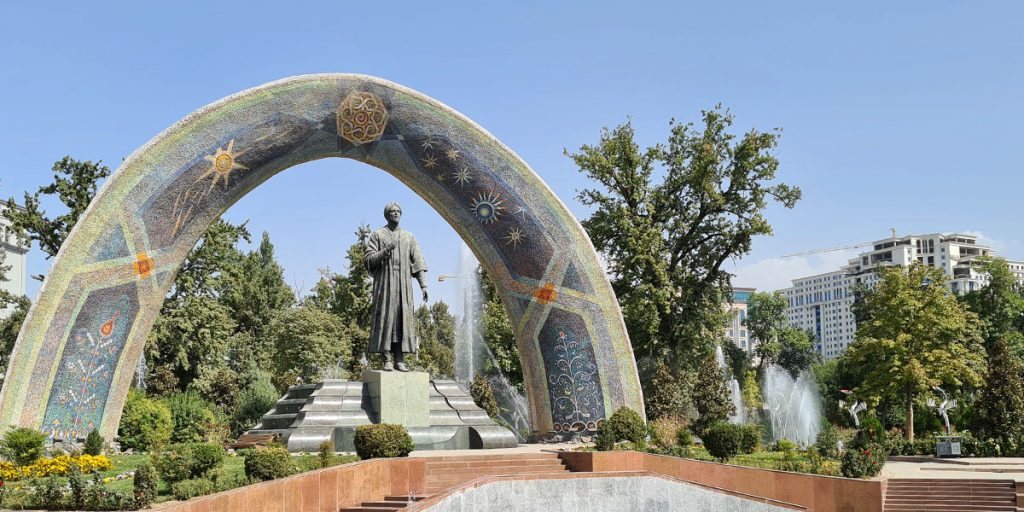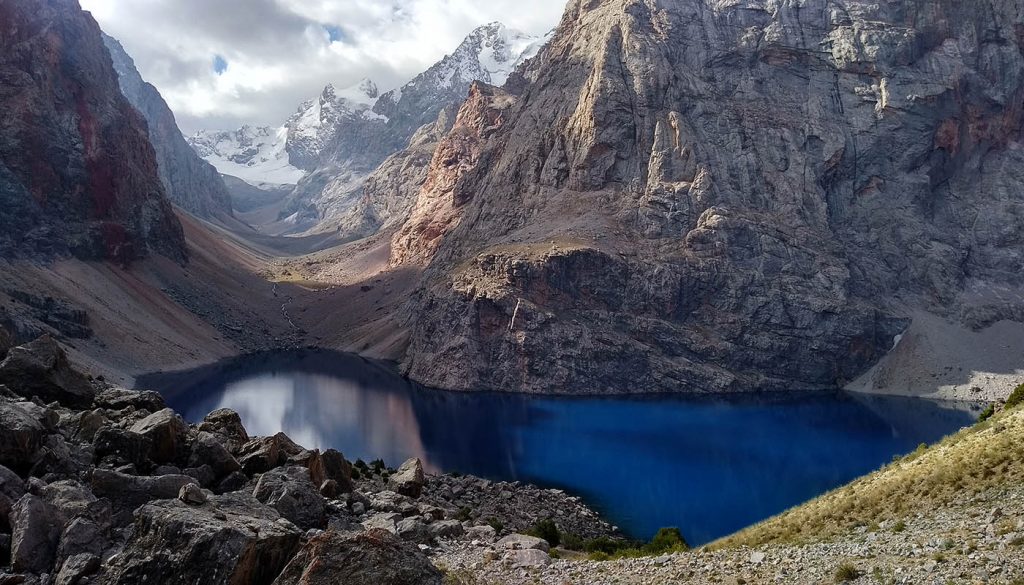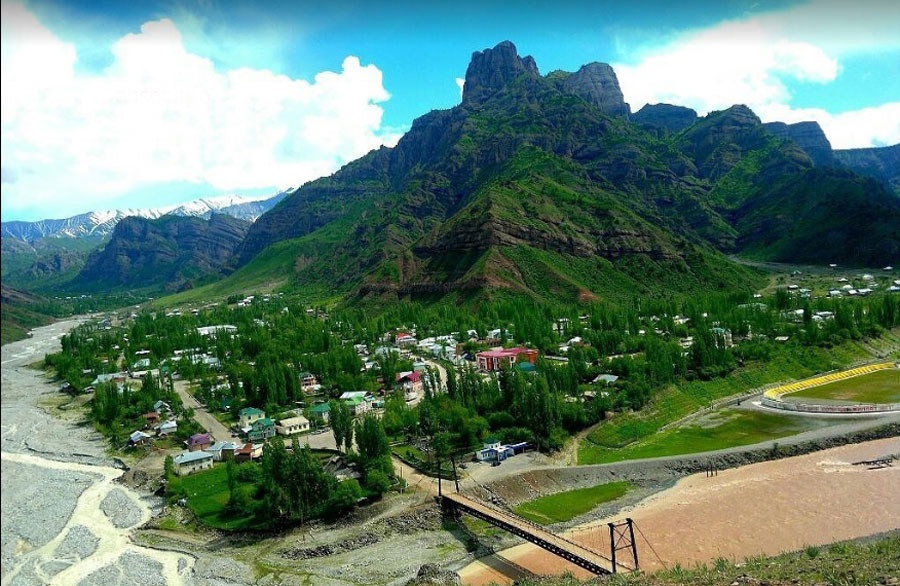Asmall mountainous jewel of a country wedged between Afghanistan and China, Tajikistan has changed since I first visited it as a backpacker in 2009. Back then, landing in the diminutive capital, Dushanbe, at 3am, a permit for trekking and letter of invitation in hand, I was met by a virtually deserted airport and a city lit by few electric lights. Nowadays, you can get a visa on arrival, and everything in Dushanbe is louder, brighter and faster.
Countless construction sites disrupt the capital and there has been much misjudged demolition of old theatres, teahouses and cinemas built during the Soviet era, causing (some) outrage. But it is hard to be too down on the city’s central artery, Rudaki Avenue. Partly canopied by mature trees, and with statues, fountains and parks, it remains one of the most handsome streets in central Asia, appearing as a lovers’ lane of sorts, filled with strolling couples. The thoroughfare also hints at the country’s identity.

Tajik is a variety of the Persian language and Dushanbe’s main road is named after the 10th-century master of Persian literature, Rudaki, who was born within Tajikistan’s modern-day borders. Along with the Qur’an, books of Rudaki’s poems remain the most purchased in Tajikistan.
As I visited the British Museum’s Silk Roads exhibition (until 23 February 2025) in London I was reminded of two things: first, that the term “Silk Road” is a convenient label for sprawling geographies, fuzzy-edged spiritual territories and a timeline stretching from roughly 200BC to AD1400. And second, how integral Tajikistan was to it.

Ancestors of modern Tajiks were the famed Sogdians, who as middlemen and long-distance traders dominated east-west commerce, with their command peaking around AD500. Their capital was the trading hub of Maracanda (Samarkand), now in Uzbekistan though still with a large Tajik population today.
Silk was but one precious item – along with everything from garnets and glass to ideas and religions – that went travelling along these vast interlocking networks through deserts and mountains and across countless borders. And today the romantic allure of the Silk Roads still pulls travellers down its various strands, from the cities of the Caucasus and ports of Turkey to the museums of China.
Connecting the Silk Roads dots is addictive and for years I’ve done so, but central Asia still feels like the centre of it all, somewhere you don’t need all that much imagination to picture how it once was.
During my last visit to Dushanbe, at the National Museum of Tajikistan I peered at a tiny gold earring in the shape of a sphinx that is more than 2,000 years old and was found close to the city, and ancient fragments of Buddhas (the British Museum’s show highlights Buddhism’s progress across central Asia via objects loaned for the first time from Tajikistan). And I gazed at murals from Penjikent, a tiny and welcoming city once at the heart of ancient Sogdiana.

In a shared minibus from Dushanbe, I headed north-west to Penjikent for four hours, just as I had done in 2009. As soon as we were out of the capital, spires of mountains appeared, steep and densely stacked, orange marmots went scattering across fields and women sold the ancient nomadic snack qurut (salted dried milk curds rolled into balls) at roadside bends. It’s a logical route as from Penjikent you can easily carry on to the most idealised Silk Roads city of all, Samarkand, providing the Tajik-Uzbek border crossing is open.

Penjikent’s museum dedicated to Rudaki, who was born nearby, is worth a stop but really it’s all about visiting the sunbaked “Pompeii of Central Asia”, the archaeological site of ancient Penjikent, where on a terrace are the ruins of a once significant Sogdian town and fortress.
Windblown and a little desolate, this Silk Roads site has given up immense treasure, including eighth-century frescoes that are on display in Dushanbe (with other sections taken to St Petersburg’s State Hermitage Museum). Penjikent developed because of trade routes and its fertile position by the Zarafshan River, literally the “strewer of gold”, and it is justifiably proud of its ancient history.
Like all good Silk Roads towns, Penjikent is also home to a couple of decent bazaars, with stalls selling unpitted cherry jam, tandoor-fresh bread and giant tubs of deliciously thick, yoghurty chaka made savoury with dill or radishes. If you are a fruit enthusiast, you might also pick up some Tajik lemons, thin-skinned and smooth as plums.

Stock up on whatever you fancy, especially if you’re going trekking around the nearby Seven Lakes, a chain of pale turquoise pools in Tajikistan’s Fann mountains that offer excellent trekking. (Last time I went walking there, I watched an eagle swoop down for a tumbling kitten, a couple of weeks into this world at most. The kitten managed to escape by darting under a rock.) While these mountains are relatively accessible, the High Pamirs, or Bam-i-Dunya (Roof of the World) at the other end of the country are not, but do offer truly wild trekking opportunities.
Once, to reach Khorog, gateway to these mountains, I bought the last seat on a tiny two-engine turboprop plane, and up we went, flying just a few metres away from the sharp edges of 7,000-metre mountains. Another time, I came back down by minibus and it took 16 hours to reach Dushanbe.
More gentle adventure is to be had in the northern Tajik city of Khujand, ringed by apricot trees and fields of wheat, all fed by gushing channels of the Syr Darya river, the ancient Jaxartes, where Alexander the Great and his armies once boated and fought.
Source: The Guardian


























